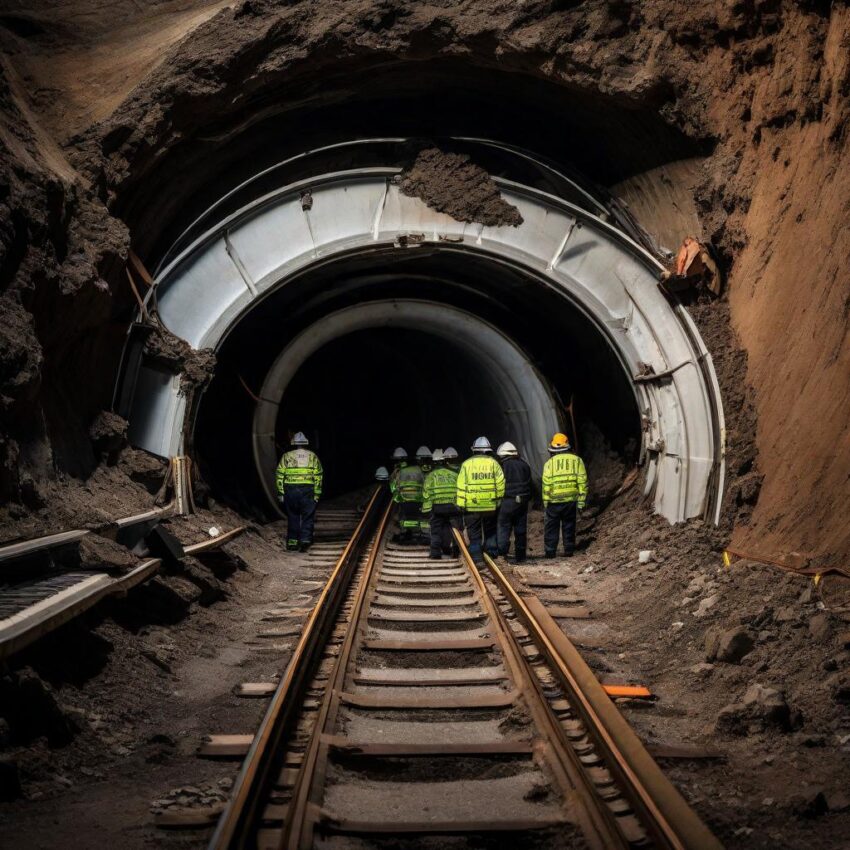I. Introduction
A. Definition of Tunnel Collapse
Tunnel collapse refers to the sudden failure of a tunnel structure, leading to its partial or complete destruction. This phenomenon can have severe consequences, ranging from infrastructure damage to potential loss of life.
B. Importance of Understanding the Causes
Understanding why tunnels collapse is paramount for engineers, construction professionals, and policymakers. It not only helps in preventing future incidents but also ensures the longevity and safety of existing tunnel networks.
II. Historical Perspective
A. Notable Tunnel Collapse Incidents
Throughout history, various tunnel collapses have left an indelible mark. From the Mont Blanc Tunnel disaster to the Channel Tunnel incident, each collapse has provided valuable lessons for improving tunnel construction and safety.
B. Lessons Learned from Past Collapses
Analyzing past collapses has led to significant advancements in tunnel engineering. Lessons learned have shaped modern construction practices and the development of technologies aimed at preventing future disasters.
III. Common Causes of Tunnel Collapse
Tunnel collapses can be attributed to a combination of geological, engineering, and construction-related factors, often exacerbated by natural disasters.
A. Geological Factors
1. Soil Types and Stability
Different soil types pose varying levels of risk to tunnel stability. Understanding these risks is crucial in the design and construction phases.
2. Water Seepage and Erosion
Water infiltration can weaken tunnel structures over time. Effective waterproofing and drainage systems are essential for mitigating this risk.
B. Engineering and Design Flaws
1. Poor Structural Design
Inadequate structural design can compromise the integrity of a tunnel. Proper planning and engineering expertise are vital for preventing design-related failures.
2. Inadequate Material Selection
Choosing subpar construction materials can lead to accelerated wear and tear, increasing the risk of collapse. Optimal material selection is a key consideration in tunnel projects.
3. Lack of Proper Ventilation
Inadequate ventilation systems can contribute to a buildup of harmful gases and increase the risk of collapses. Proper airflow is crucial for maintaining a safe tunnel environment.
C. Construction Issues
1. Inadequate Quality Control
Strict quality control measures during construction are essential to identify and rectify potential issues before they escalate.
2. Insufficient Support Systems
Proper support systems, such as reinforcements and shoring, are necessary for preventing structural failures during and after construction.
D. Natural Disasters
1. Earthquakes and Their Impact
Tunnels located in seismic zones face additional challenges. Implementing earthquake-resistant designs is imperative for their safety.
2. Flooding and Tunnel Stability
Regions prone to flooding require special attention to drainage systems and waterproofing to prevent water-induced collapses.
IV. Detection and Prevention
A. Advanced Monitoring Technologies
Incorporating advanced monitoring technologies, such as sensors and real-time data analysis, enhances the ability to detect potential issues early on.
B. Enhanced Construction Techniques
Continuous improvement in construction techniques, including innovations in tunnel boring machines and excavation methods, contributes to the prevention of collapses.
V. Importance of Regular Maintenance
A. Periodic Inspections
Regular inspections and maintenance activities help identify and address wear and tear, ensuring the longevity of tunnel structures.
B. Addressing Wear and Tear
Promptly addressing signs of wear and tear through maintenance interventions is crucial for preventing structural deterioration.
VI. Case Studies
A. Successful Tunnel Projects
Examining successful tunnel projects provides insights into the strategies and technologies employed to overcome potential collapse risks.
B. How They Overcame Potential Collapse Risks
Case studies of tunnel projects that faced challenges but successfully mitigated collapse risks offer valuable lessons for the industry.
VII. The Human Factor
A. Training and Skill Development
Ensuring that tunnel construction professionals are well-trained and possess the necessary skills is essential for preventing human-induced errors.
B. Communication in Tunnel Construction
Effective communication among team members is critical for the success of tunnel projects, reducing the likelihood of errors and ensuring safety.
VIII. Future Innovations
A. Emerging Technologies in Tunnel Construction
Exploring cutting-edge technologies, such as artificial intelligence and robotics, reveals the potential for safer and more efficient tunnel construction.
B. Trends for Safer Tunnel Design
Identifying current and future trends in tunnel design helps shape industry practices for enhanced safety and resilience.
IX. Conclusion
In conclusion, the collapse of tunnels is a multifaceted issue with roots in geological, engineering, and human factors. By learning from historical incidents, implementing advanced technologies, and prioritizing maintenance, the industry can strive for safer and more resilient tunnel construction. The future holds promising innovations that will further elevate the standards of tunnel engineering.
FAQs
Are tunnel collapses common?
Tunnel collapses are relatively rare, but when they occur, the consequences can be severe. Understanding the causes is crucial for preventing future incidents.
How can technology help prevent tunnel collapses?
Advanced monitoring technologies and construction techniques play a vital role in early detection and prevention of tunnel collapses.
What role does human error play in tunnel collapses?
Human error, whether in design, construction, or maintenance, can.


